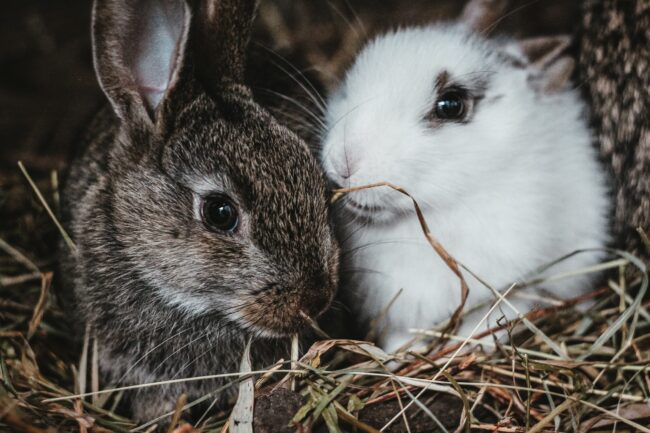Table of Contents
It’s a cold winter evening. You’re in bed, all cozy and warm, feeling grateful that you are not out there facing the harsh realities of the coldest days of the year. But as you look outside, your animal-loving thoughts drift to a worrying question. How on earth do wild rabbits manage in the snow and freezing temperatures? Do they hibernate? How do they survive?
This article focuses on rabbit biology and behavior during this time, especially how they’ve adapted to get through winter, and also the problems that these fascinating animals face when the cold season arrives.
How Do Rabbits Survive Winter?
Well, you might be surprised to learn that most rabbits enjoy cool weather. Rabbits find temperatures as low as 28 degrees Fahrenheit quite pleasant. However, temperatures lower than that may cause them to get under the weather or even catch hypothermia.
Considering the average temperature during winters in the USA happens to be around 33.2 °F (excluding Alaska and Hawaii), the temperature is not always the main worry for rabbits.
Rabbits struggle to find food and shelter due to the lack of vegetation and humanitarian aid during the cold season. Cottontail rabbits do not have a high survival rate and usually fall prey to the harsh circumstances during the cold season. European rabbits and most hares are quick to adapt and don’t usually rely on humanitarian aid.
Adaptations to Cold Weather
Rabbits are confronted with many pertinent changes in the winter. And, in turn, adapt themselves to survive. The usual adaptations include growing a thicker fur, reducing activity and travel, and digging burrows to keep themselves warm.
Rabbits also experience increased ingestion of feces, which allows for the complete digestion of food that has already been eaten and it also enriches them with Vitamin B. It is common for rabbits to resort to a wood-based diet to ensure enough roughage to increase the rate of digestion.
Shelter
Due to the lack of vegetation density in winter, rabbits become more visible to predators. Wild rabbits usually hide in evergreen trees and dense wild bushes, so camouflage is a struggle in the snow.
Some rabbits change their color to blend in with the white and gray landscape of winter. Some folks in the states and a few other countries also spot wild rabbits seeking shelter in their yards.
Diet Changes
Even during the famous lack of resources during winter, rabbits are maestros at finding food. Rabbits resort to the following diet during winter.
Wood-Based Sources
The ideal snack pack for rabbits during winters usually consists of twigs, dead stems, barks of dead trees, and woody plants such as the oak tree and willow.
Partially Digested Feces
Rabbits must consume more than half of their partially digested feces, mainly due to their ineffective digestive tracts. Rabbits obtain nutrients like Vitamin B through the ingestion of their own feces. Don’t try this at home!
Reproduction
Rabbits start breeding as early as late fall in the months of October and November. Wild rabbits start having their first litters as early as late November or late December.
Hibernation
Rabbits do not hibernate at all. Surprisingly, their physical activity and playfulness exponentially increase during winters. Rabbits prefer cold weather over warm weather.
You won’t spot many rabbits during winter since they usually roam around during dusk or dawn to avoid getting seen by predators. Usually, they seek food during these hours.
How do Rabbits Survive Without Hibernating?
Unlike other animals, rabbits are more than happy with the food available during winter. They are capable of foraging during this time but more importantly, they cannot hibernate – even if they tried.
Hypothermia and Other Diseases
Although rabbits seem to adapt well to winter, extreme conditions can still threaten their lives. Temperatures below 32 degrees Fahrenheit are usually too brutal for them. Cities like New York, Chicago, and various others can be fatal for rabbits during the peak weeks of winter.
If exposed to wet and damp conditions during extreme temperatures, rabbits can also catch pneumonia. In addition to this, older rabbits can experience worsening arthritis which can be excruciatingly painful for them.
If you find a rabbit in distress and it shows signs of hypothermia, contact a vet. Symptoms include difficulty breathing, weakness, confusion, and shivering.
How Can You Make a Difference?
In most cases, it is not advisable to feed wild animals, including rabbits. But in case of heavy snow and extreme scarcity of food, when you notice that these animals are starving and suffering, grains, and hay are advised.

